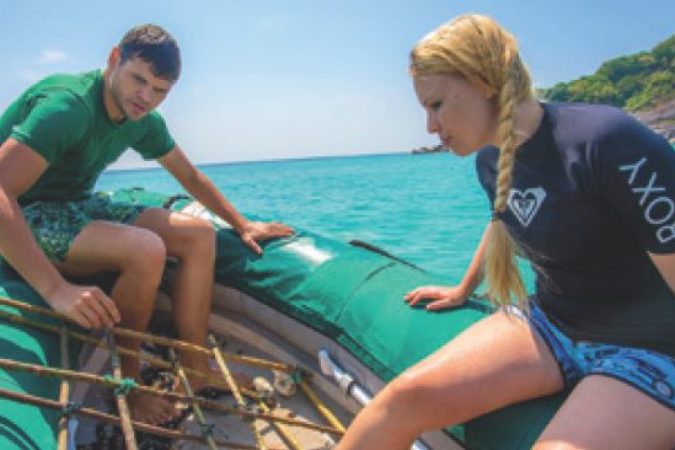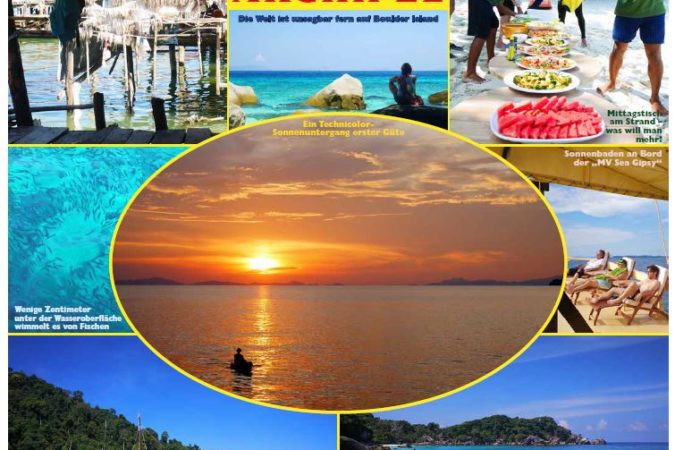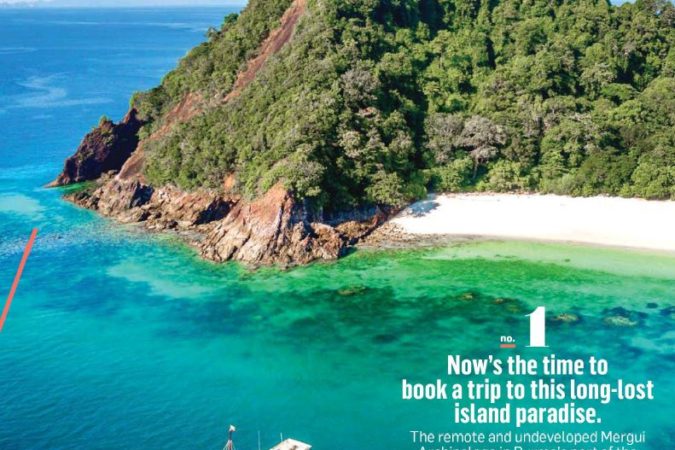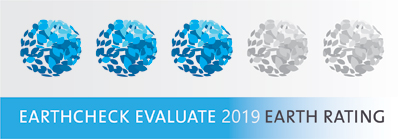IT IS one of the last parts of Asia to see the sunset, it has some of the finest white-sand beaches in the world and its coral reefs are teeming with fish. But there is one big difference between the beaches on this tropical island group and Gisborne’s Midway, Waikanae and Wainui beaches: there are no people.
The beaches in the Mergui archipelago are deserted.
Getting there:
You could leave Gisborne today on the 10.45am flight to Auckland and tomorrow be having a late breakfast as you cruise out to the Mergui archipelago. Thai Airways flies every afternoon from Auckland to Bangkok, with many other airlines offering indirect services via Australia or other Asia capitals. An early morning and late afternoon flight from Bangkok’s smaller Don Mueang Airport (DMK) go south to the hot spring town of Ranong (UNN), located a short drive and boat trip from Kawthaung in Myanmar.
Getting around:
Island-hopping trips, which depart twice a week during the season October to May, must be booked in advance
Where to stay:
Island resorts offer packages which include boat transfers on set days
Tip:
Fresh, new crisp US dollar bills are required for payment of marine park entry fees, which start at US$100 for a 5-day visit.
The chain of islands, numbering 800 or so, stretched across 400km in the warm waters of the Andaman Sea, has yet to be discovered by tourism.
Closed off to all since the 1940s, the region straddling international waters and Myanmar’s territorial border with Thailand opened up to divers only 20 years ago, who were required to stay on chartered live-aboard boats.
Since 2012, only one resort has been operating in the entire island group. But this will change, with a handful of accommodation options scheduled to open in 2018. This year, only 2000 visitors managed to explore the new destination, which is more accessible from Thailand’s Phuket and Ranong than the Burmese city of Yangon, an expensive NZ$250 flight away.
It is NZ$2 to take a shared longtail water taxi from the Thai fishing port of Ranong across a river estuary to Kawthaung, Myanmar’s most southern settlement, and the gateway to the archipelago.
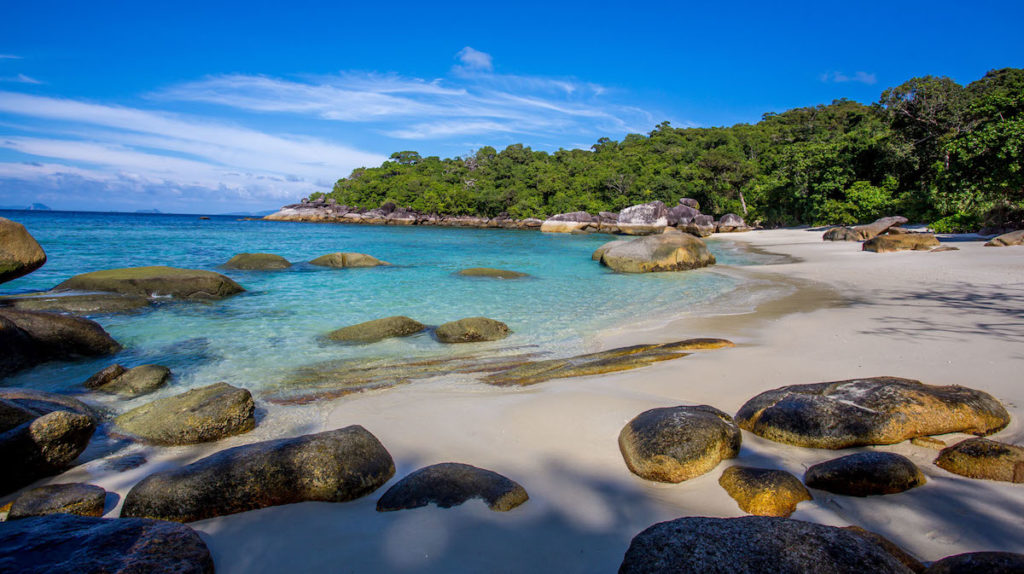
Easily-obtainable tourist e-visas (US$50) and marine park fees (US$100) are required to head out to the islands, some located up to five hours’ cruising away.
Scheduled twice-weekly departures of island-hopping boats take intrepid travellers to jungle-coverered islands, where guests can swim, kayak, snorkel, birdwatch, beachcomb or just relax.
“Some of the islands aren’t even named,” confides Bjorn Burchard, of Moby Dick Tours (islandsafarimergui.com), as we set anchor off the sandy spit of a postcard-perfect beach.
“This group of islands,” he says, gesturing at a handful of forested islands and rocky islets, “they are just known as Island 115”.
There since 2000, Burchard, who has been running guesthouses, diving operations and boats in South East Asia for three decades, sailed into the archipelago when Gisborne was first to welcome in the new millennium.
“My initial impression was that I had found one of the great ‘hidden places’ of Asia. The archipelago was unpopulated, unspoiled and undeveloped.”
Burchard would like to see marine sanctuaries, similar to those in New Zealand, such as Te Tapuwae o Rongokako Marine Reserve, created to help replenish fish stocks.
He is among those advocating small-scale eco-tourism rather than glitzy commercialism and mass tourism, which has spoiled nearby Phuket.
Already, guests from New Zealand have been among the pioneers to get bragging rights by being the first to venture into the islands.
“I believe the archipelago will appeal to those who want soft adventure, contact with nature, a digital detox and solitude, away from the stresses of modern life.”
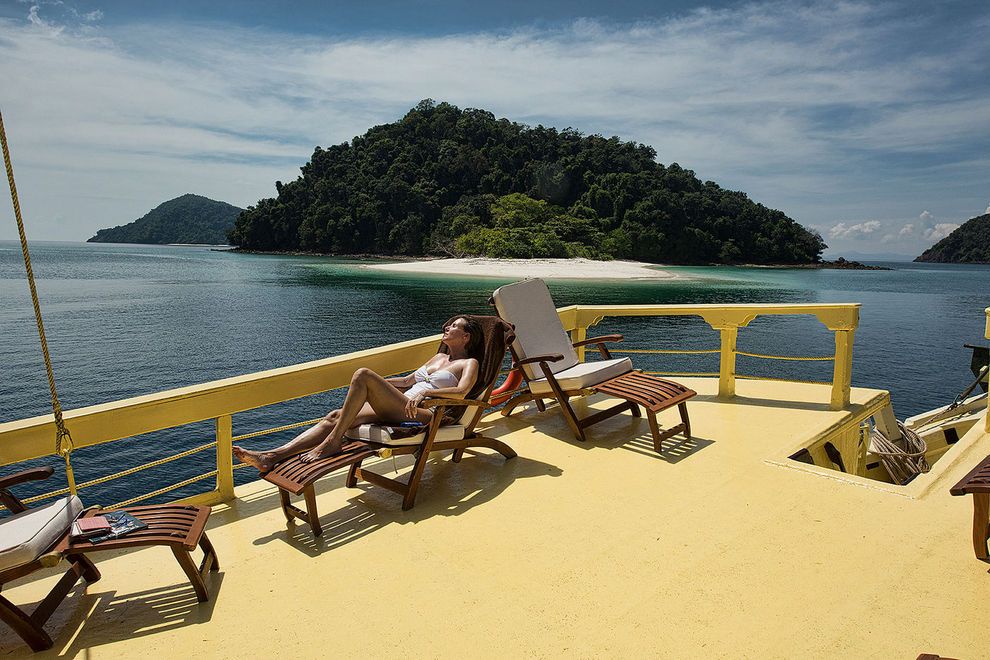
On Boulder Island, one of the larger ‘outer’ islands, we have certainly escaped one of the main stresses of modern life: there is no phone signal, and the satellite wifi is so weak I turn off my phone.
The island, which has five beaches, several viewpoints and a bamboo forest, is the ideal size. With its own water source, a solar farm and plans for a permaculture garden, the bungalows at Boulder Bay Eco-Resort (www.boulderasia.com) are tucked away in the jungle, invisible from the sea, yet through the coastal vegetation, guests have sea views of the boulder-fringed bay.
Even though the island is close to the Equator, cooling sea breezes mean that air-conditioning is not necessary.
Despite its distance from civilisation, and the lack of development in the island group, over-fishing has depleted stocks of many of the fish, including sea turtles, stingrays, sharks and the clownfish (as seen in ‘Finding Nemo’).
At Moken Bay, a 25-minute walk across the island, there is evidence of damage from dynamite fishing and dragging boat anchors.
I swim out with Burchard and a team from marine conservation NGO Project Manaia (www.projectmanaia.at) to inspect an innovative trial using discarded fish trap cages as the foundation for a new coral reef.
When German researcher Annika Dose comes back to the surface after checking a newly-placed cage, where damaged coral is now growing again, she announces that fish are already moving to the new habitat.
Sunsets and sunrises
Back on land, I talk with local guide Jon about the uniqueness of the small island. While Gisborne is ideally located for sunrises, Boulder Island’s compactness means it enjoys both spectacular sunrises and sunsets.
The dawn and dust vistas has been drawing back photographic location scout and expedition guide David Van Driessche (www.davidvandriessche.com), now into his ninth year visiting the archipelago.
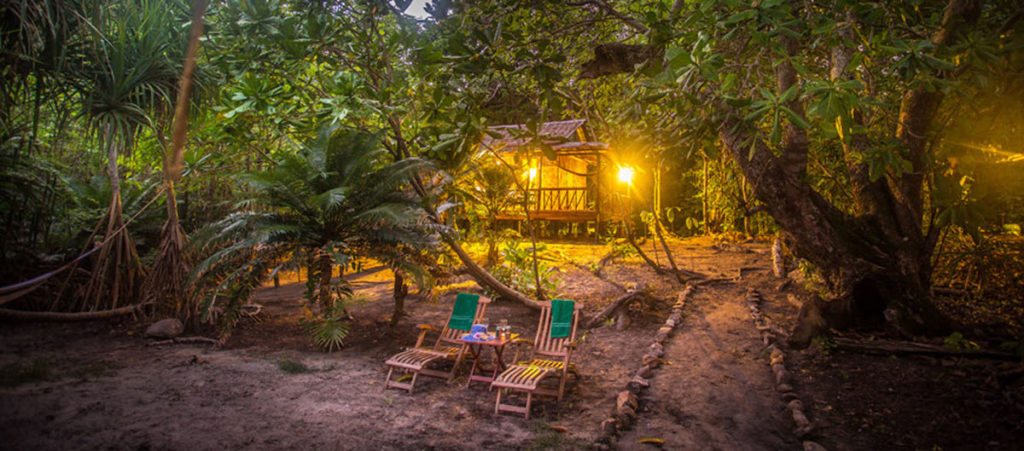
The islands are still largely unvisited, he says.
Even though he leads boat-based photo safaris each year, he reckons only 5 percent has been photographed.
The Belgian has been documenting the semi-nomadic life of the sea-faring Moken, famed for their ability to free-dive into the depths, and their sea observations, which meant they all survived the 2004 tsunami.
“Where else can you be in such an amazing, beautiful place?” says Van Driessche.
“I think in this day and age, it is a very rare experience to be the only person standing on a pristine beach or watching from a viewpoint.”
That night, aftering watching fireflies in the banyan-tree and vine forest from my bungalow verandah, I go out to make the first footprints onto the soft-sand beach smoothed by the tide. There is no one else around. I write out the words with my big toe, “I was here, Keith, NZ’.
The next morning the words are gone, as the sun comes up over the ridge the only signs of life I see are the stickfigure clawprints from unknown seabirds, deep trails from crabs, and a new line of shells marking the high tide.
Keith Lyons (keithlyons.net) is a New Zealander based in Asia since 2005. He has contributed text and images to the coffeetable book ‘The Best of Myanmar: The Golden Land of Hidden Gems’ (KMG) published this month, while his travel essays feature in ‘Opening Up Hidden Myanmar’ (Duwon Books) to be launched in January 2018.


